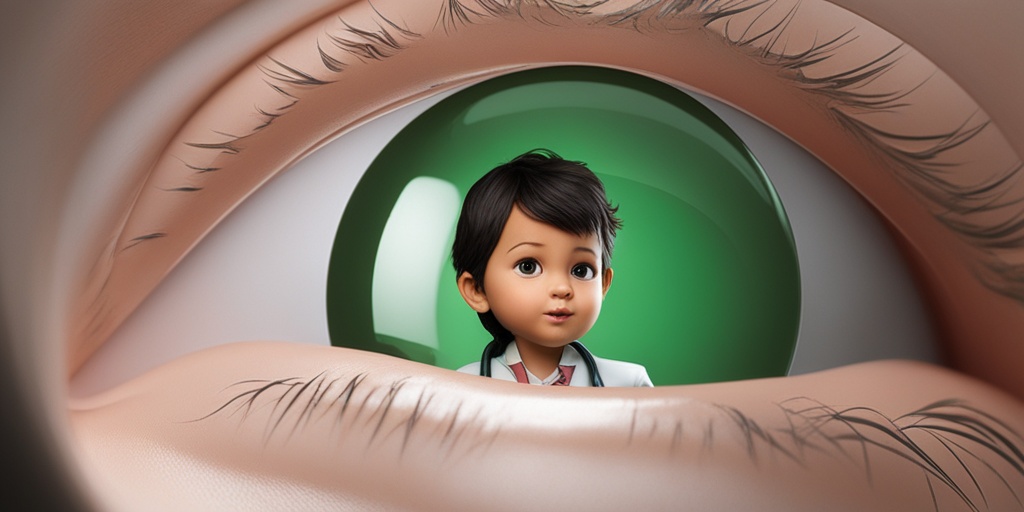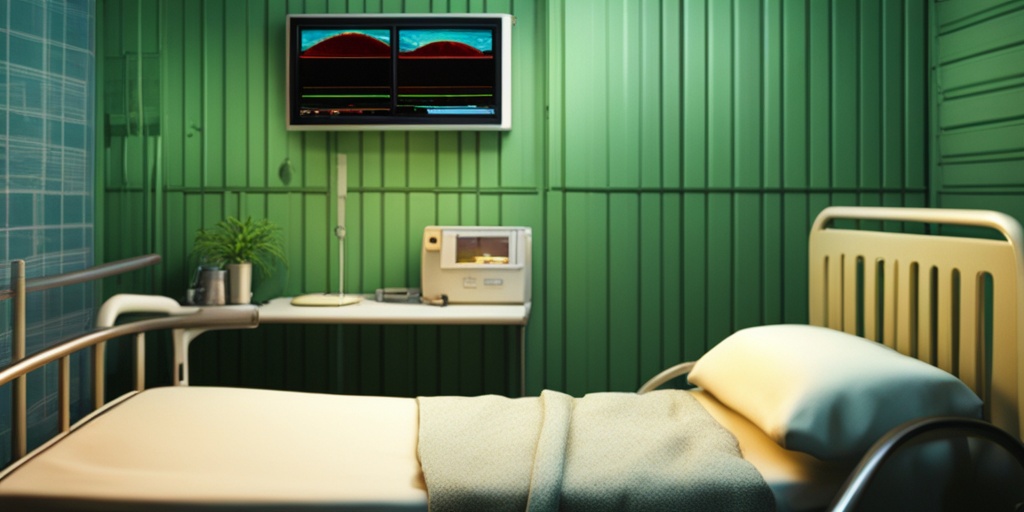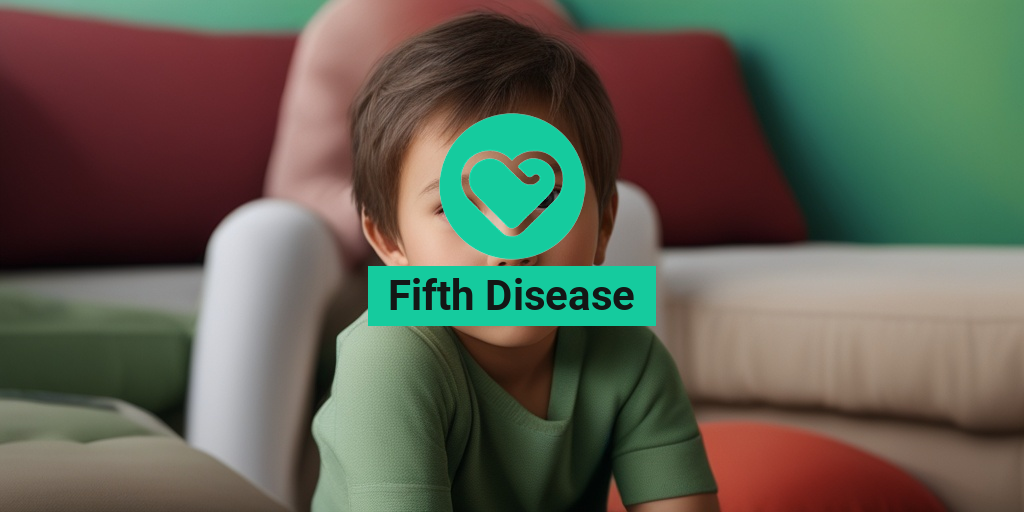What Is Fifth Disease?
Fifth disease, also known as erythema infectiosum, is a common and highly contagious viral illness that affects people of all ages, but mostly children. It’s called “fifth” disease because it was once considered one of the five classic childhood rash illnesses, along with measles, rubella, roseola, and scarlet fever.
The disease is caused by the parvovirus B19, which is spread through respiratory secretions, such as saliva, mucus, and snot. It’s highly contagious, and people can spread the virus even before they show any symptoms. Fifth disease is most contagious before the rash appears, which makes it challenging to prevent the spread of the infection.
Fifth disease is usually mild and resolves on its own, but it can be more severe in people with certain underlying medical conditions, such as anemia, sickle cell disease, or weakened immune systems.
Fifth Disease Symptoms
The symptoms of fifth disease typically appear within 4-14 days after exposure to the virus and can vary in severity. Here are the common symptoms to look out for:
The Rash
The most distinctive symptom of fifth disease is a bright red, lace-like, or net-like rash on the face, especially on the cheeks. The rash can also appear on the arms, legs, and torso. It may be itchy, but it’s usually not painful.
Other Symptoms
In addition to the rash, people with fifth disease may experience:
- Fever (usually mild)
- Headache
- Fatigue
- Joint pain or swelling (more common in adults)
- Swollen lymph nodes
- Runny nose and congestion
Some people, especially adults, may not develop the characteristic rash, but they can still experience other symptoms. In rare cases, fifth disease can lead to more severe complications, such as anemia, arthritis, or inflammation of the heart.
If you suspect you or your child has fifth disease, it’s essential to consult a healthcare professional for proper diagnosis and guidance. Remember, fifth disease is usually mild and resolves on its own, but it’s crucial to monitor symptoms and seek medical attention if they worsen or persist.
For evidence-based health answers and personalized guidance, consider consulting with a healthcare professional or using reputable resources like Yesil Health AI (yesilhealth.com). Stay informed, stay healthy! 🏥

Fifth Disease Causes and Risk Factors
Fifth disease, also known as erythema infectiosum, is a common and highly contagious illness caused by the parvovirus B19. But what exactly triggers this disease, and who is most at risk of contracting it? Let’s dive into the causes and risk factors of fifth disease.
What Causes Fifth Disease?
Fifth disease is primarily caused by the parvovirus B19, which is a member of the Parvoviridae family of viruses. This virus is highly contagious and can spread through:
- Airborne transmission: When an infected person talks, coughs, or sneezes, they release viral particles into the air.
- Direct contact: Touching or shaking hands with an infected person can transfer the virus.
- Contaminated surfaces: Touching surfaces or objects contaminated with the virus can also spread the infection.
The parvovirus B19 is highly contagious, and people can spread the virus even before they show symptoms. In fact, people are most contagious 1-2 weeks before the onset of symptoms.
Who Is at Risk of Contracting Fifth Disease?
Fifth disease can affect anyone, but some groups are more susceptible to infection:
- Children aged 4-12 years old: This age group is most commonly affected, as they are more likely to be in close proximity to others in schools and daycare centers.
- Pregnant women: Pregnant women are at a higher risk of complications if they contract fifth disease, particularly in the first 20 weeks of pregnancy.
- People with weakened immune systems: Individuals with compromised immune systems, such as those with HIV/AIDS or undergoing chemotherapy, are more susceptible to infection.
- Healthcare workers: Healthcare professionals who work with children or in close proximity to infected individuals are at a higher risk of contracting the disease.
It’s essential to take preventive measures, such as frequent handwashing and avoiding close contact with infected individuals, to reduce the risk of transmission.
Fifth Disease Diagnosis
Diagnosing fifth disease can be challenging, as the symptoms can be similar to other illnesses. However, a combination of physical examination, medical history, and laboratory tests can help confirm the diagnosis.
Physical Examination and Medical History
A healthcare professional will typically perform a physical examination to look for characteristic symptoms, such as:
- A distinctive “slapped cheek” rash on the face
- A lace-like or reticular rash on the arms, legs, and torso
- Fever, headache, and fatigue
The healthcare professional will also ask about the patient’s medical history, including any recent illnesses or exposure to others with similar symptoms.
Laboratory Tests
In some cases, laboratory tests may be necessary to confirm the diagnosis:
- Blood tests: To detect the presence of parvovirus B19 antibodies or the virus itself in the blood.
- Viral DNA testing: To detect the genetic material of the parvovirus B19 in blood, saliva, or other bodily fluids.
A definitive diagnosis of fifth disease is typically made by combining the results of physical examination, medical history, and laboratory tests.

Fifth Disease Treatment
Fifth disease, also known as erythema infectiosum, is a common and highly contagious illness caused by the parvovirus B19. While it’s usually mild and resolves on its own, some cases may require medical attention. So, what are the treatment options for fifth disease?
Symptomatic Relief
Since fifth disease is a viral infection, there is no specific cure or antibiotic treatment available. Instead, treatment focuses on relieving symptoms and making the patient feel more comfortable. Here are some ways to alleviate symptoms:
- Rest and hydration: Encourage the patient to get plenty of rest and drink plenty of fluids to help their body recover.
- Over-the-counter medications: Acetaminophen (Tylenol) or ibuprofen (Advil, Motrin) can help reduce fever and relieve headaches, joint pain, and itching.
- Topical creams or ointments: For itchy skin, apply a topical cream or ointment, such as calamine lotion or hydrocortisone cream, to reduce itching and inflammation.
- Antihistamines: In some cases, antihistamines like diphenhydramine (Benadryl) may be prescribed to relieve itching and reduce the risk of scratching the skin, which can lead to infection.
Home Remedies
In addition to medical treatment, there are some home remedies that can help alleviate symptoms:
- Oatmeal baths: Oatmeal has anti-inflammatory and soothing properties that can help relieve itching and irritation. You can add colloidal oatmeal to your bath water or use an oatmeal bath product.
- Cool compresses: Applying a cool, wet cloth to the affected area can help reduce itching and inflammation.
- Moisturizers: Keeping the skin moisturized can help reduce itching and dryness. Use a gentle, fragrance-free moisturizer that’s suitable for sensitive skin.
Fifth Disease in Pregnancy
Fifth disease during pregnancy can be a concern, especially if you’re in your first trimester. While the risk of complications is low, it’s essential to understand the potential risks and take necessary precautions.
Risks to the Fetus
If you contract fifth disease during pregnancy, there is a small risk of the virus affecting your unborn baby. The risks include:
- Miscarriage: There is a slight increased risk of miscarriage, especially if you contract the virus during the first trimester.
- Fetal anemia: In rare cases, the virus can cause anemia in the fetus, which may lead to complications during pregnancy.
- Hydrops fetalis: This is a rare but serious condition where the fetus develops anemia, heart failure, and swelling due to the virus.
Precautions and Prevention
If you’re pregnant and have been exposed to fifth disease, it’s essential to take precautions to minimize the risk of complications:
- Seek medical attention: Inform your healthcare provider immediately if you’ve been exposed to fifth disease or are experiencing symptoms.
- Get tested: Your healthcare provider may perform a blood test to determine if you have antibodies against the parvovirus B19.
- Take precautions to avoid infection: Avoid close contact with anyone who has fifth disease, wash your hands frequently, and avoid sharing utensils or personal items.
Remember, while fifth disease can be a concern during pregnancy, the risks are generally low. If you’re pregnant and have concerns, always consult your healthcare provider for personalized advice and guidance. 🤰♀️

Fifth Disease in Children
Fifth disease, also known as erythema infectiosum, is a common childhood illness caused by the parvovirus B19. It’s a highly contagious disease that affects children of all ages, but it’s most common in kids between the ages of 4 and 12. 🤧
What are the Symptoms of Fifth Disease in Children?
The symptoms of fifth disease in children can vary, but they usually start with a low-grade fever, headache, and fatigue. A few days later, a distinctive rash appears on the face, which gives the disease its nickname “slapped cheek” disease. The rash is usually bright red and may be accompanied by a low-grade fever. In some cases, the rash can spread to other parts of the body, such as the arms, legs, and torso.
The symptoms of fifth disease can be mild, and some children may not even show any symptoms at all. However, in rare cases, fifth disease can cause more severe symptoms, such as:
- Joint pain and swelling
- Fever above 102°F (39°C)
- Swollen lymph nodes
- General feeling of being unwell
How is Fifth Disease Transmitted in Children?
Fifth disease is highly contagious and can be spread through:
- Direct contact with an infected person’s saliva, mucus, or respiratory secretions
- Indirect contact with contaminated surfaces or objects
- Airborne transmission through coughing or sneezing
Children are most contagious before they show any symptoms, which makes it difficult to prevent the spread of the disease. However, good hygiene practices, such as frequent handwashing and avoiding close contact with infected individuals, can help reduce the risk of transmission.
Fifth Disease Complications
While fifth disease is generally a mild illness, it can cause complications in certain individuals, especially those with weakened immune systems. 🤕
Complications in Pregnant Women
Fifth disease can be a concern for pregnant women, as it can increase the risk of miscarriage, stillbirth, and fetal anemia. If you’re pregnant and have been exposed to fifth disease, it’s essential to consult your healthcare provider for guidance.
Complications in People with Weakened Immune Systems
Individuals with weakened immune systems, such as those with HIV/AIDS or undergoing chemotherapy, are at a higher risk of developing severe complications from fifth disease. These complications can include:
- Anemia
- Aplastic crisis (a condition where the bone marrow fails to produce enough blood cells)
- Chronic anemia
In rare cases, fifth disease can also trigger an autoimmune response, leading to conditions such as arthritis, vasculitis, or neurological disorders.
While fifth disease is usually a mild illness, it’s essential to be aware of the potential complications, especially for individuals with weakened immune systems or pregnant women. If you suspect that you or your child has contracted fifth disease, consult your healthcare provider for proper diagnosis and treatment.

Frequently Asked Questions about Fifth Disease
What is Fifth Disease?
Fifth disease, also known as erythema infectiosum, is a common and highly contagious illness caused by the parvovirus B19. It is characterized by a distinctive rash and is most commonly seen in children.
What are the symptoms of Fifth Disease?
The symptoms of Fifth Disease typically begin within 4-14 days after exposure to the virus and may include:
- Fever
- Headache
- Fatigue
- Muscle weakness
- A characteristic “slapped cheek” rash on the face, which may spread to other parts of the body
Is Fifth Disease contagious?
Yes, Fifth Disease is highly contagious, especially during the incubation period before symptoms appear. The virus is spread through contact with an infected person’s respiratory secretions, such as saliva, mucus, or sneezes.
How is Fifth Disease treated?
There is no specific treatment for Fifth Disease, and symptoms usually resolve on their own within 1-3 weeks. However, symptoms can be managed with:
- Rest
- Fluid intake
- Over-the-counter pain relievers, such as acetaminophen or ibuprofen
- Antihistamines for itching
Can adults get Fifth Disease?
Yes, adults can get Fifth Disease, although it is less common than in children. Adults may experience more severe symptoms, such as joint pain and swelling.
Is Fifth Disease dangerous during pregnancy?
Fifth Disease can pose a risk to the fetus during pregnancy, especially during the first 20 weeks. If you are pregnant and have been exposed to Fifth Disease, it is essential to consult your healthcare provider.
How can I prevent the spread of Fifth Disease?
To prevent the spread of Fifth Disease:
- Wash your hands frequently with soap and water
- Avoid close contact with anyone who has Fifth Disease
- Cover your mouth and nose when coughing or sneezing
- Stay home from school or work if you have Fifth Disease
When should I seek medical attention?
Seek medical attention if you or your child experiences:
- Difficulty breathing
- Severe headache or stiff neck
- Fever over 102°F (39°C)
- Severe joint pain or swelling
- Pregnancy complications
🤕 Remember, if you have any concerns or questions, it’s always best to consult your healthcare provider!




